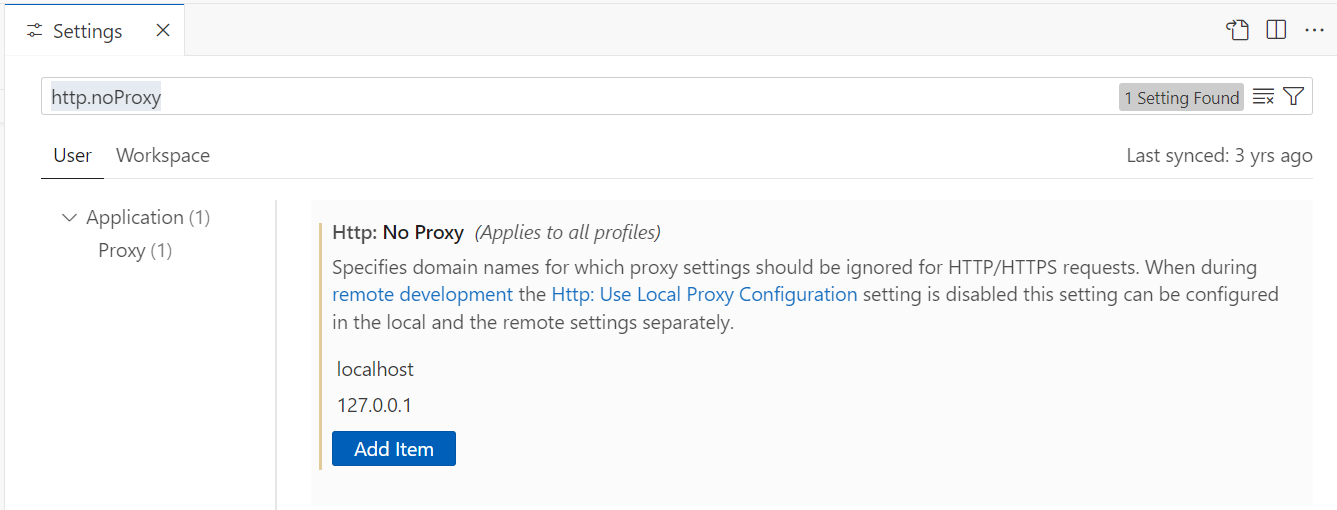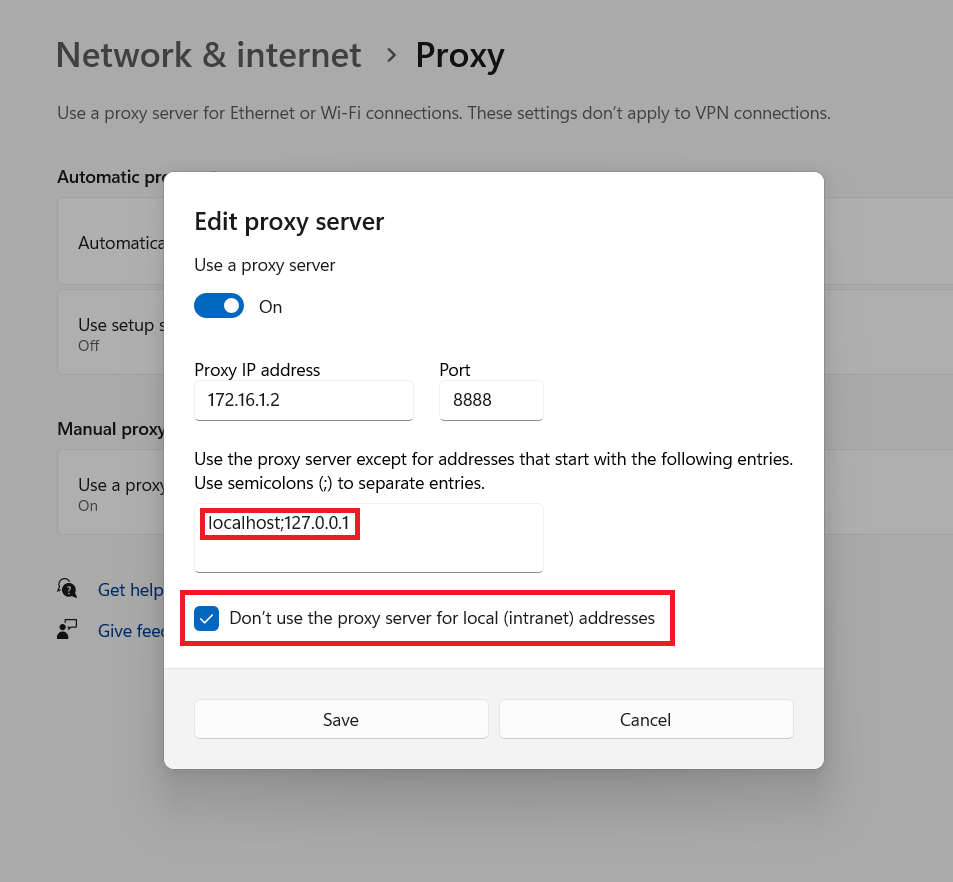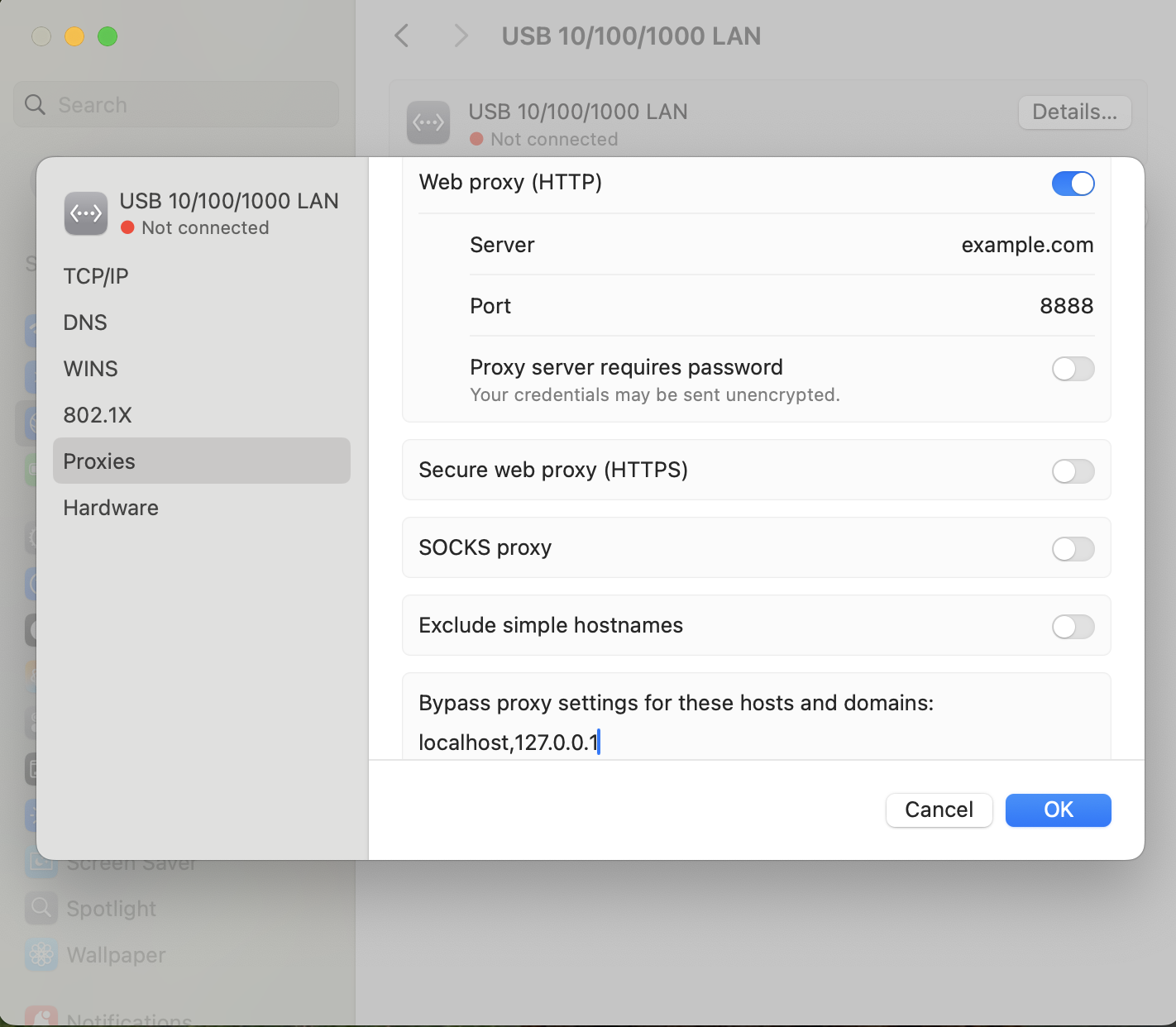Proxy Configuration
Eggplant Studio requires direct communication with the Eggplant Functional (EPF)
and Eggplant Gateway (EPGW) processes it launches. To achieve this,
it uses the machine’s local network interface (i.e., the loopback address
127.0.0.1/localhost), which is specifically designed to keep network traffic
on the same device.
Proxying requests meant for localhost is generally undesirable unless specifically required. Chromium-based browsers (like VS Code, Chrome, Edge) bypass system proxy settings for localhost by default. However, that behavior can be overridden, potentially leading to errors.
The recommended solution is to explicitly bypass proxying requests for localhost either for the specific application or on a system-wide level.
Exclude Localhost Traffic from getting proxied in VS Code
VS Code added a global setting for configuring all launched VS Code instances in version 1.96. Prior versions support command line arguments.
-
VS Code Version 1.96 and Higher:
Open User Settings using the command
>Preferences: Open Settings (UI)and search for thehttp.noProxysetting. Add bothlocalhostand127.0.0.1to this setting. The change takes effect immediately without requiring a restart.
VS Code proxy configuration example
-
All VS Code Versions:
Launch VS Code with the following command-line arguments to disable proxy usage or bypass the proxy for specific addresses:
# Disable proxy entirely:
--no-proxy-server
# Bypass proxy for localhost:
--proxy-bypass-list="localhost;127.0.0.1"For more details, refer to the VS Code proxy server support documentation and Chromium's Network Settings.
Exclude Localhost Traffic from getting proxied on a system-wide level
Ensure that your operating system’s network settings exclude
requests to 127.0.0.1 and localhost from being routed through the proxy:
-
Windows 10/11: Open the Settings app, go to
Network & Internet→Proxy→Manual proxy setup. Enterlocalhost;127.0.0.1in the input field or select the checkbox option and click Save.
Windows proxy configuration example settings
-
Ubuntu: Open the Network settings, navigate to
Proxy, and inputlocalhost,127.0.0.1in the appropriate field.
Ubuntu proxy configuration example settings
-
Mac: Open the System Settings app via the Apple menu, click Network in the sidebar, click the desired network service, click Details, then click Proxies. Add the appropriate settings and click Ok.

macOS proxy configuration example settings
Security note: We urge all users to be security conscious and adhere to the best security practices and network policies set out by your organization. If you are unsure on how to proceed, consult your IT team or Keysight Eggplant support.